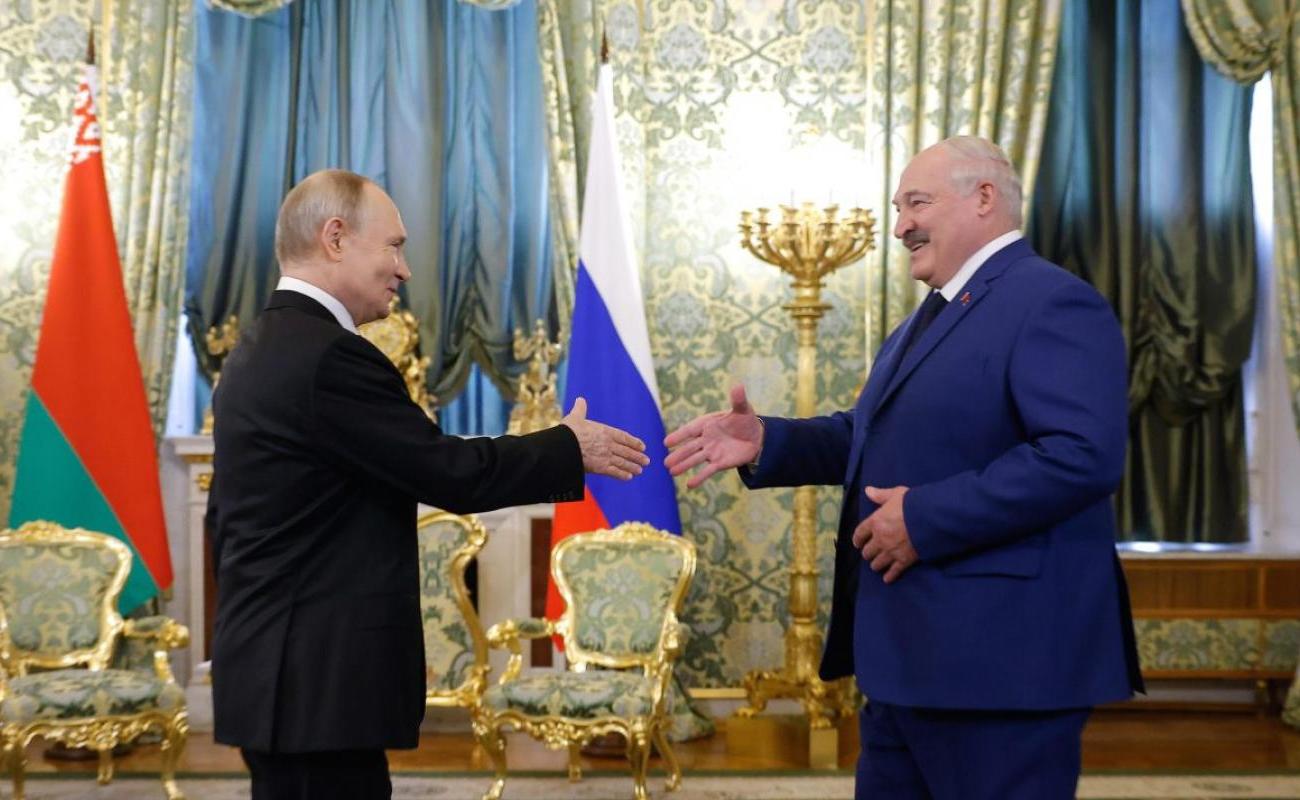What lies behind Russia’s large-scale military exercises in Belarus?

In September, new joint Russian-Belarusian military exercises called “Zapad-2025” are scheduled to take place on Belarusian territory.
Similar exercises in 2022 served as the final preparation stage for Russia’s full-scale invasion of Ukraine, and the upcoming drills will be the first major maneuvers in Belarus since the start of the large-scale war, Pavlo Rad, Yaroslav Chornogor from Ukrainian Prism Foreign Policy Council write for EUalive’s partner European Pravda.
It is therefore no surprise that these exercises are drawing significant attention not only in Ukraine but also within the EU and NATO.
As early as April, Ukrainian President Volodymyr Zelenskyy warned that Russia might be planning aggressive actions disguised as military exercises. “NATO remains vigilant and closely monitors Russian military activity, including its exercises,” Alliance officials say.
It is important to clarify that when assessing the risks of these drills escalating into real military aggression, the primary concern is not the opening of a new front against Ukraine but rather a possible attack on Belarus’s neighboring EU countries: Poland and Lithuania.
But are these concerns justified? Under what circumstances could such a scenario unfold?
A tradition of threatening NATO
Back in 2009, a decision was made to hold regular joint Belarusian-Russian exercises, and since then the maneuvers known as “Union Shield” or “Zapad” have been conducted every two years as operational-strategic drills.
The first serious warnings about these maneuvers emerged in 2017, when then-commander of the Ukrainian Armed Forces, Viktor Muzhenko, described them as a cover for the Kremlin’s real objectives.
Traditionally, these exercises were seen more as a threat to EU countries, as they were originally planned as rehearsals for combat actions against NATO members.
For instance, the “Zapad-2021” exercises, which were record-breaking in scale with 200,000 troops from Russia, Belarus, and allied CSTO countries participating, simulated a scenario where a fictional “Polar Republic” attacked a “Central Federation.”
However, the 2021 exercises still served as preparation for the invasion of Ukraine – after the drills, some Russian army battalions remained in Belarus near the Ukrainian border.
Subsequent military exercises, formally much smaller in scale, became the cover for the launch of Russia’s full-scale war against Ukraine.
Since the war began, Belarus has not hosted large-scale exercises. Although the 2023 “Union Shield” exercises were planned, they were canceled, and similarly, no large operational or strategic maneuvers took place in 2024.
Instead, after February 2022, smaller-scale drills involving specific military branches, especially air forces, took place.
At the start of 2023, joint flight-tactical exercises occurred in Belarus, with the deployment of the Iskander-M missile system, and the focus shifted from defense to offense.
According to leaked Pentagon documents, these activities aimed to convince Ukrainian intelligence of a real threat of renewed attack from Belarusian territory.
A notable escalation was the announcement of deploying tactical nuclear weapons in Belarus, accompanied by unusually loud information campaigns.
Similarly, sudden exercises in May 2024 tested non-strategic nuclear weapon carriers. Last year’s maneuvers provided no evidence of actual nuclear weapons on Belarusian soil but were remembered for clumsy attempts by Belarusian military to pass off auxiliary fuel tanks of Su-25 attack aircraft as bombs allegedly containing nuclear charges.
Thus, military exercises held in Belarus since 2022 have also served as a tool of pressure on the West.
Will Zapad-2025 be an exception?
The key question remains whether Russia, given its resource constraints, can deploy enough troops to pose a real threat to NATO members.
Unlike the 2021 cycle, when Russian equipment arrived in Belarus from mid-July, this year, with the exception of some Russian Aerospace Forces transport flights – there has been no significant troop movement.
Western politicians do not currently see a serious threat.
NATO Secretary General Mark Rutte has dismissed the possibility of a Russian attack on the Alliance following Zapad-2025.
Similar skeptical statements came from Vilnius, where Security and Defense Committee Chair Gedrimas Eglinskas confirmed no unusual activity, and from Warsaw, where Polish Foreign Minister Radosław Sikorski said Russia is “stuck” in Ukraine.
Another factor reducing threat perceptions is rhetoric from Minsk. In early July, Belarus’s self-proclaimed President Alexander Lukashenko announced changes to the exercises: troop numbers would be nearly halved and maneuvers relocated deeper inside Belarus, as far as possible from Western borders.
Belarus also reported inviting Western partners as international observers.
However, three weeks later Minsk’s rhetoric shifted: Belarusian General Staff Chief Pavel Muraveiko threatened to redeploy some units closer to Poland and Lithuania in response to NATO’s upcoming “Defenders of Europe-2025” exercises this fall.
This shift demonstrates that the worst-case scenario remains possible.
Although the security threat this year is relatively low, the possibility of aggression against NATO members persists, albeit in a more distant timeframe.
Moscow continues to use the integration mechanisms of the “Union State” to expand control over Belarus’s security sector. The current military exercises may be another step toward this goal.
Official Minsk’s attempts to balance Russian influence currently appear unsuccessful, increasing the likelihood of further political and military absorption by Moscow.
Such a scenario could soon turn NATO’s eastern flank into a new hotspot in the East-West confrontation.
This risk is heightened by the shared border and the region’s vulnerable geography, for example, Vilnius lies just 50 kilometers from the Belarus border, and the Baltic states are connected to continental Europe only through the narrow Suwałki Gap.
The range of possible scenarios remains broad, so NATO members should prepare now for a potential conflict involving Russia and a Belarus fully integrated with Moscow.
Russian President Vladimir Putin (L) welcomes Belarusian President Alexander Lukashenko (R) during their meeting at the Kremlin in Moscow, Russia, 13 March 2025. EPA/MAXIM SHEMETOV/POOL
